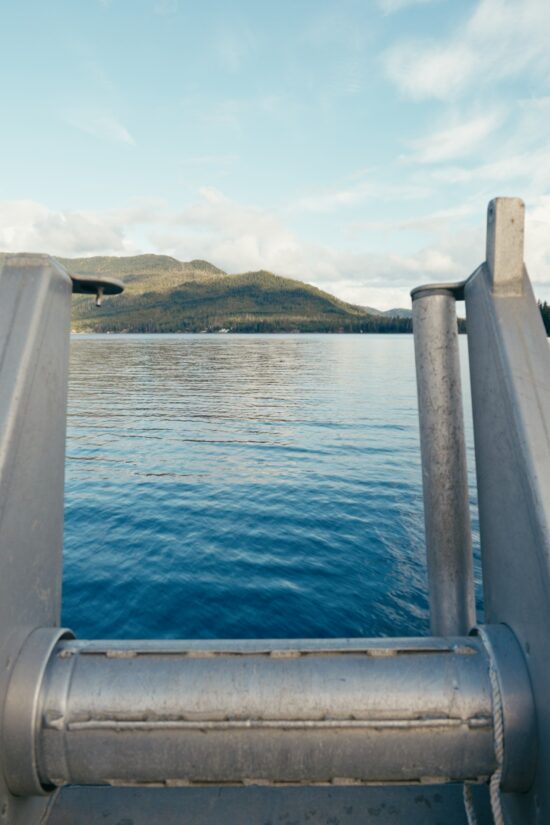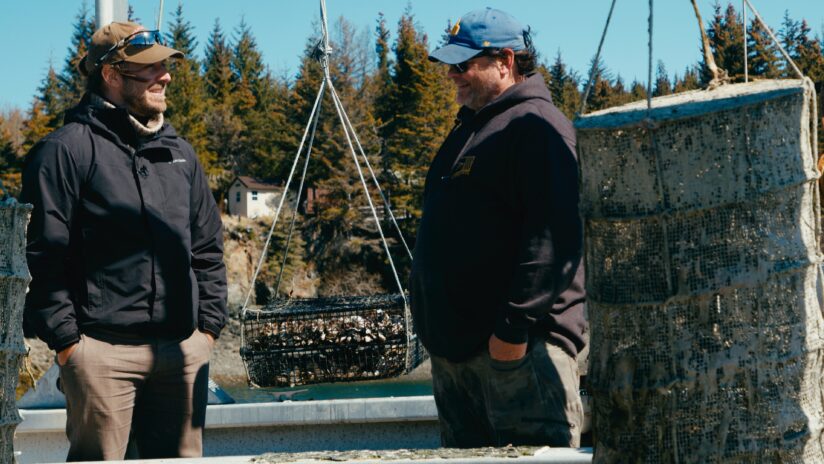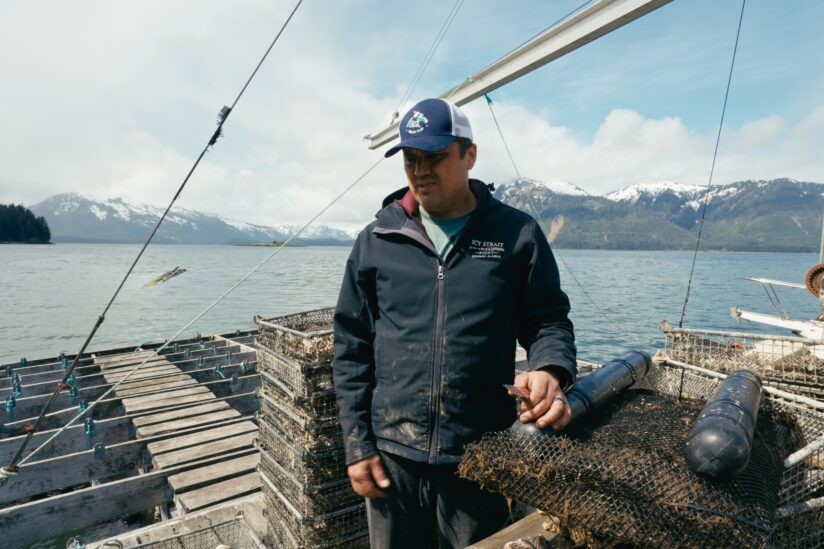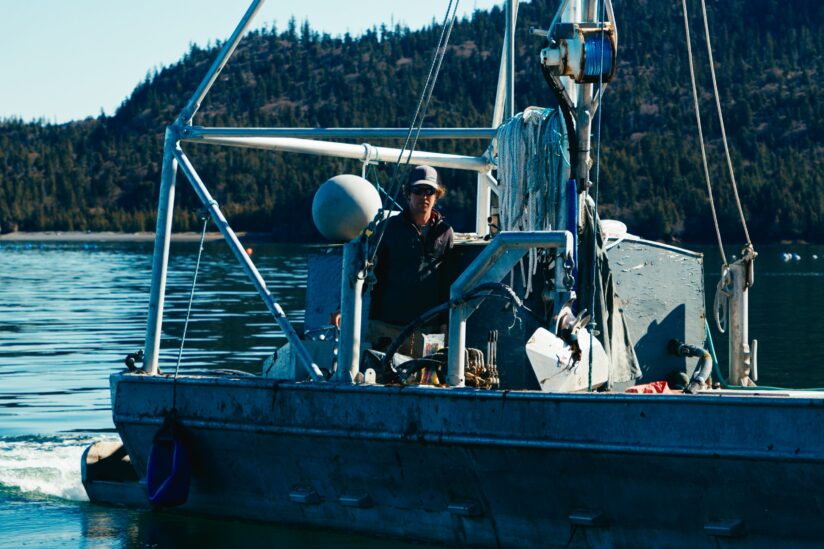
By expanding the oyster farming sector alongside kelp and other aquatic species, Alaska can foster resilient economies, create meaningful jobs, and elevate the industry to new heights as a leader in premium oyster production.
The future of farming
We asked each farmer about their ambitions to expand and the main factors that limit their farm’s growth. Farmers were also asked to list the major production challenges they face, as well as their needs or wishes that could help improve farming activities. The answers paint a picture of the industry in real-time and provide valuable insights into technology gaps and innovation opportunities.
Farm challenges
- Labor shortages
- Weather-related issues
- Nursery (FLUPSY) capacity
- Predation
- Transportation & logistics
Farm wishlist
- Expanding production capacity (rafts, flip cages, FLUPSYs, etc.)
- Cooling capacity at local airports
- Automated on-site/close-by equipment (weight sorting, bag/cage flipper, etc.)
- More case studies of successful farmers
Source: Hatch Innovation Services field Level Data Collection - Alaska 2024
Future of the industry
A local perspective
Mariculture in Alaska can provide year-round employment and support local communities, offering a sustainable alternative to the state's reliance on seasonal tourism, logging, fishing, and oil revenues. By fostering a resilient mariculture industry encompassing kelp and oyster farming, as well as other aquatic species, Alaska can create a more stable economy with increased tax revenues that benefit local economies and the state as a whole. This shift towards a year-round economic model would encourage residents to remain in the state, providing steady employment opportunities and contributing to financial stability.
Climate change is obviously impacting many things that our coastal communities really depend on here. I think mariculture could be a way to revitalize a lot of these coastal communities, both as a subsistence resource and as an economic opportunity
A global perspective
Anchorage historically serves as a significant freight hub and a gateway to the Far East, positioning Alaska as a prime location to market mariculture products internationally. Leveraging this strategic location, Alaska can efficiently export premium seafood to meet the constant demand in global markets. Furthermore, the state's vast and underutilized coastline offers ample space for sustainable mariculture development, distinguishing Alaska from regions facing overcrowding and limited opportunities for ocean-based activities. This combination of existing international transportation infrastructure and abundant coastal resources presents a substantial opportunity for Alaska to serve worldwide markets and drive economic growth by expanding its mariculture industry.
With a broad perspective of the entire value chain, we combined various partner feedback with the study's findings to highlight strategic actions that can leverage local players' innovative efforts to overcome critical bottlenecks in the Alaskan oyster industry.
Scaling
- With over 30,000 square miles of shoreline, authorized shellfish and seaweed farms currently occupy merely ~1,200 acres, approximately 2 square miles. This highlights the state's vast ocean space compared to other states, which allows diverse marine activities like mariculture to flourish.
- The strategic placement of farms in proximity to regional transportation hubs and populated areas is crucial. Clustering farms together can foster cost-efficient collaborations and valuable business partnerships, offering significant economic benefits.
- Expanding the industry while maintaining the balance between family operations and full-fledged corporation farms can sustain supply to meet the continually rising demand for Alaskan oysters.
Local best practices
- Alaska's oyster farming industry has a promising opportunity to establish best practice standards by incorporating knowledge from prosperous oyster farming regions nationwide and globally. Several initiatives, such as from Sea Grant, NOAA, Greenwave, and others, are working to create a unified approach and make information publicly available so farms can ensure consistent quality.
- Adopting and adjusting best practices from around the world and implementing them from the start can elevate Alaska's oyster industry to new heights, differentiating Alaskan oysters as premium and positioning the state as a leader in oyster production.
Cooperatives
- Shared ownership of nurseries, processing capacity, and other costly infrastructure and logistics should considerably lower the upfront expenses of establishing an oyster farm. It will also allow growers to concentrate on improving yields rather than processing, marketing, and other time-consuming activities.
- Running a remote oyster farm presents numerous challenges that may seem overwhelming. Drawing inspiration from the US agricultural sector, cooperatives have a track record of helping new industries overcome these types of challenges.

Sean Crosby (right), manager of the Kachemak Shellfish Growers Co-op, in Homer.
Fisheries and mariculture
- In Alaska, the seasonal rhythms offer a unique synergy between farming and fishing. Most work on kelp farms (planted in the fall and harvested in the spring) and oyster farms occurs during the shoulder season of commercial salmon fisheries, making them compatible with winter fisheries.
- Commercial fishing vessels are well adapted to kelp farming or working with oyster gear, as shown by Mothers of Millions.
- As most aquatic farmers still intertwine their work with commercial fishery activities to optimize income streams, so can fishing operations, taking advantage of their vessels, skilled workforce, established waterfront properties, and processing facilities to overcome some logistic bottlenecks in kelp and oyster production.


